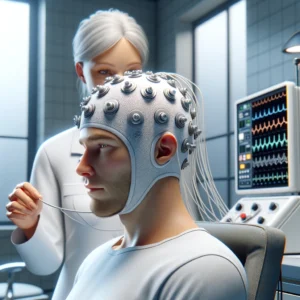Head injuries are a significant health concern due to their potential to cause both immediate and long-term effects. Among the various symptoms that can manifest following a head injury, bleeding from the ears is particularly alarming. This article will explore the causes, implications, and appropriate responses to ear bleeding post-head injury, emphasizing the need for prompt medical attention.
Causes of Ear Bleeding
Bleeding from the ears after a head injury can be attributed to several underlying causes, each indicating varying degrees of severity. One of the primary causes is a basilar skull fracture, which is a break in the bones at the base of the skull. This type of fracture often leads to tearing the meninges, the protective layers covering the brain, causing cerebrospinal fluid (CSF) leakage and bleeding from the ears. The presence of CSF can sometimes be distinguished by its clear or straw-colored appearance.
Another potential cause is ruptured eardrums, which can occur due to sudden pressure changes or direct impact associated with head trauma. While less severe than a skull fracture, a ruptured eardrum can still lead to significant bleeding and potential hearing loss if not adequately treated.
Another cause is hemotympanum, the presence of blood in the middle ear. This condition can result from trauma that causes bleeding within the ear structures without necessarily rupturing the eardrum. Hemotympanum often indicates a severe injury to the temporal bone or other structures within the ear.
Implications of Ear Bleeding
Ear bleeding following a head injury has profound and multifaceted implications. First and foremost, the presence of blood indicates significant trauma that may extend beyond the ear itself, potentially involving the brain and surrounding structures. A basilar skull fracture, for instance, increases the risk of infection due to the exposure of the meninges, leading to conditions such as meningitis.
Furthermore, ear bleeding can be accompanied by other symptoms indicative of more severe brain injury, including loss of consciousness, severe headache, nausea, vomiting, and confusion. These symptoms, combined with ear bleeding, strongly suggest a need for immediate medical evaluation to rule out or address life-threatening conditions like intracranial hemorrhage or increased intracranial pressure.
Appropriate Response and Treatment
Given the potential severity of ear bleeding after a head injury, immediate medical attention is crucial. Initial steps include ensuring the individual is safe, preferably lying down with slightly elevated head to reduce intracranial pressure. It is important not to insert any objects, including cotton swabs, into the ear to try and stop the bleeding, as this can exacerbate the injury.
Medical professionals will typically conduct a thorough evaluation, which may include imaging studies such as a CT scan or MRI to assess the extent of the injury. Treatment will depend on the underlying cause of the bleeding. For basilar skull fractures, management often involves observation, bed rest, and sometimes surgical intervention to repair the fracture and prevent complications. Ruptured eardrums may heal independently, but severe cases might require surgical repair. In cases of hemotympanum, treatment focuses on managing symptoms and monitoring for potential complications.
Conclusion
Bleeding from the ears following a head injury is a symptom that should never be overlooked. It can indicate severe underlying conditions such as basilar skull fractures, ruptured eardrums, or hemotympanum, all of which necessitate prompt medical evaluation and treatment. Understanding this symptom’s causes and implications and appropriate responses can significantly improve outcomes and prevent further complications. Immediate medical attention is essential to ensure the best possible prognosis for individuals experiencing this alarming symptom.
References
Perel, P., Roberts, I., Bouamra, O. et al. Intracranial bleeding in patients with traumatic brain injury: A prognostic study. BMC Emerg Med 9, 15 (2009). https://doi.org/10.1186/1471-227X-9-15
Maas AI, Stocchetti N, Bullock R: Moderate and severe traumatic brain injury in adults. Lancet Neurol. 2008, 7 (8): 728-41. 10.1016/S1474-4422(08)70164-9. https://www.thelancet.com/journals/laneur/article/PIIS1474-4422(08)70164-9/abstract
Bullock R, Chesnut R, Clifton GL, Ghajar J, Marion DW, Narayan RK, et al: Management and prognosis of severe traumatic brain injury. J Neurotrauma. 2000, 17: 451-627. 10.1089/neu.2000.17.451.
Narayan RK, Maas AI, Servadei F, Skolnick BE, Tillinger MN, Marshall LF: Progression of traumatic intracerebral hemorrhage: a prospective observational study. J Neurotrauma. 2008, 25 (6): 629-39. 10.1089/neu.2007.0385. https://www.liebertpub.com/doi/10.1089/neu.2007.0385






